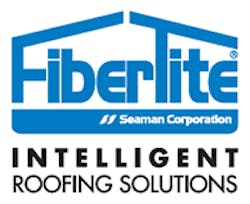Critical Questions To Ask Before Buying a Roof
The commercial low slope roofing market is flooded with options. Built Up Roofs, Modified Bitumen, EPDM, TPO, PVC and PVC + KEE products are the most common options. Choosing the right product is an important decision. It’s also an expensive one. By doing your homework, you can distinguish which choice will best protect your assets.
The following are the most important questions to ask before buying a roof.
Look for proof that the product already stands up to the tests you plan to give it. If you want your roof to last 20 years, withstanding exposure to harsh chemicals and intense sunshine, ask the manufacturer for examples of similar success stories in your environment. Be aware: Many products that start out performing like champions lose their original physical properties with age. Request aged physical property tests.
Figuring the cost of your roof requires looking far beyond the sticker price. Additional information about the system must be considered to determine the real value of the roof. The product’s proven life in a given environment has the most impact on the roof’s overall life cycle cost. Additional factors include: the energy savings it can bring if it is a reflective roof system, typical maintenance and repair costs, and also, if necessary, the cost of disposing of the roof when it’s old.
According to the United States Department of Energy, in most northern regions of the country, reflective roof systems can save between $0.05 and $0.10 per square foot per year. In some southern states, savings can be more than $0.20 per square foot per year. Be sure to ask the manufacturer for life-cycle cost data.
Don’t overestimate the value of a warranty. In many cases, it’s just a piece of paper used as a marketing tool. A warranty for 15 or 20 years makes you feel safe the day you buy it, but first get proof that the roof system will last that long. Will the manufacturer last that long?
This article is advertiser sponsored:
Take time to understand the warranty, especially its exclusions. Many warranties
are pro-rated and exclude common conditions like ponding water, hail, oil or grease.
Definitions for wind speed can be vague. Request references to measure customer
satisfaction with warranty claims.
Big or small manufacturer, nothing is more important than their integrity and proven
commitment to service and product performance.Who will install my roof and what is their experience with
this system?
The best roof system in the world put in the wrong hands can fail. The quality of the finished product depends on the experience of the installer. Check to see if the product manufacturer provides installation training and ask for a complete project list to verify customer satisfaction.
Will this system remain viable over time, allowing me to make
alterations or repairs?
Because some systems’ original physical properties change with age, they can become next to impossible to modify or repair. It’s common to make alterations after installation, such as changing the HVAC system, or adding rooftop equipment, exhaust fans or skylights. Make sure repairs meet manufacturer’s specifications to lessen possible frustrations.
Does this system meet the performance standards required by
my insurance company?
Make sure you understand the local fire codes and your insurance underwriter’s requirements regarding the fire and wind performance characteristics of your roof. Communicate them to the supplier. Remember: Many systems lose the integrity of their performance ratings with time.
In the end, your choice will only be as good as your information. Taking time to understand your requirements and the capabilities of the roofing system will make a big difference in your satisfaction.
Click here and we’ll send you a life cycle cost calculator so you can determine a rough estimate of the life cycle cost of your present roof, or compare it to an alternative roofing system.
The best roof system in the world put in the wrong hands can fail. The quality of the finished product depends on the experience of the installer. Check to see if the product manufacturer provides installation training and ask for a complete project list to verify customer satisfaction.
Because some systems’ original physical properties change with age, they can become next to impossible to modify or repair. It’s common to make alterations after installation, such as changing the HVAC system, or adding rooftop equipment, exhaust fans or skylights. Make sure repairs meet manufacturer’s specifications to lessen possible frustrations.
Make sure you understand the local fire codes and your insurance underwriter’s requirements regarding the fire and wind performance characteristics of your roof. Communicate them to the supplier. Remember: Many systems lose the integrity of their performance ratings with time.
In the end, your choice will only be as good as your information. Taking time to understand your requirements and the capabilities of the roofing system will make a big difference in your satisfaction.
Click here and we’ll send you a life cycle cost calculator so you can determine a rough estimate of the life cycle cost of your present roof, or compare it to an alternative roofing system.
For more information about FiberTite Roof Systems please call Seaman Corporation at (800) 927-8578, ext. 5953. Ask for Art Marangi.
Terry Anderson
FiberTite Roofing Systems
Southeast Regional Manager
